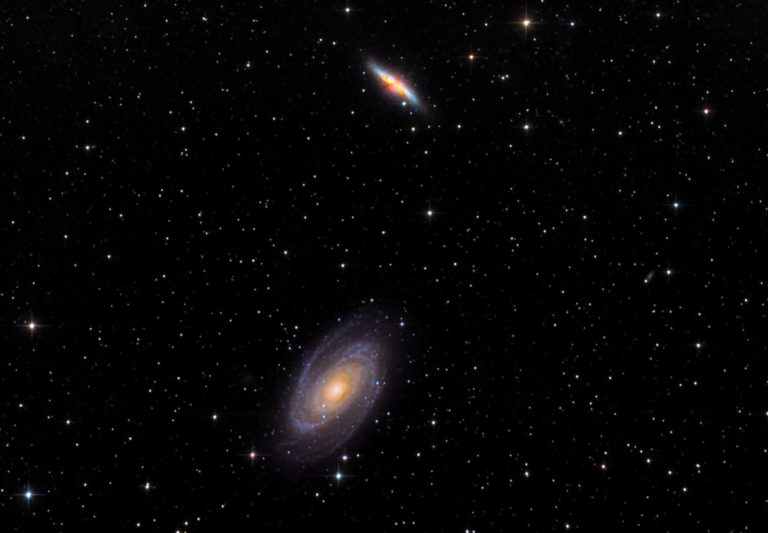These galaxies are about 12 million light-years from us. They are part of the so-called M81 group, and are thus to be regarded as relatively close neighbors to us.
M82 (top) is a so-called Starburst galaxy, where a very intense new formation of stars is taking place. At its core, stars are newly formed at a rate 10 times higher than in our entire galaxy the Milky Way. There is a lot of activity going on in the M82’s core, where there is a massive black hole, and where supernovae occur about once every 10 years. All this activity is the cause of the powerful outflow of red hydrogen that can be sensed in the picture. M81 is a typical “grand design” spiral galaxy. It is about 90,000 light-years in diameter and thus about half the size of our own galaxy, the Milky Way.
This image is a merge of data from two evenings, the 20th and 22nd of April 2020. The first evening I used the camera as is and the second evening I used my Baader UHC filter to amplify the red hydrogen areas in M82 a bit. The first night there were 19 exposures of 300 s and the second night 10 exposures of 360 s, ISO 800 both evenings.
I have done several reprocessings of the raw images, this final version is made with stacking in Deep Sky Stacker, processing in StarTools and a certain post-adjustment with sharpening and color adjustment on galaxies and stars separately in Gimp. One of the bigger concerns with this image has been that the stars were large and also became a little too saturated, but the “Shrink” module in StarTools helped to get a better size of the stars, and the color was fixed with a mask and curves in Gimp. I probably neglected the focus the first night, which probably contributed to the big stars.
